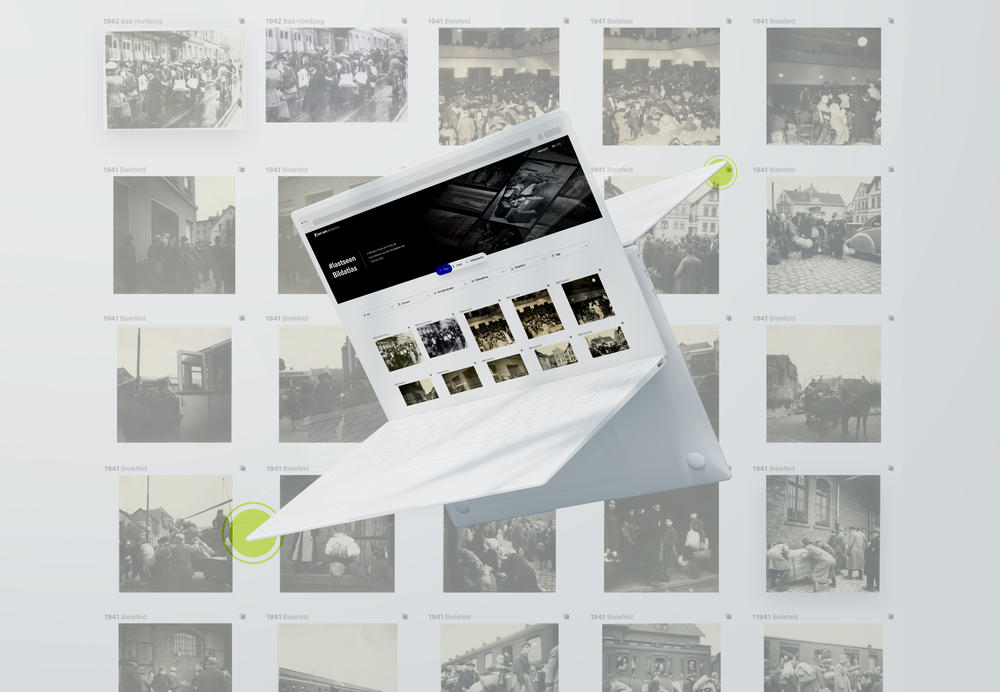International Research Project on Photographs of Deportations in Nazi Germany to Be Continued at Freie Universität Berlin
Fundamental research on the history of National Socialism is being carried out in the “#LastSeen” project / Second funding phase has now begun
№ 185/2023 from Sep 01, 2023
An international research project on the history of National Socialism has been relocated to the Selma Stern Center for Jewish Studies Berlin-Brandenburg at Freie Universität Berlin. Six prestigious international partner organizations are involved in the joint project, titled “#LastSeen. Pictures of Nazi Deportations.” Since 2021 the Arolsen Archives – International Center on Nazi Persecution, USC Dornsife Center for Advanced Genocide Research in Los Angeles, House of the Wannsee Conference Memorial and Educational Site in Berlin, Hadamar Memorial Museum, Public History Munich, and Selma Stern Center for Jewish Studies Berlin-Brandenburg have managed to compile around 500 photographs of deportations from sixty cities in Nazi Germany, thereby doubling this collection of historical images. These photographs, complete with helpful contextual information and categorizations, are now available via a digital image atlas. The project has also produced an online game designed to encourage young people and others to engage with the history and stories behind the photos and better understand what is being depicted in them.
Who is the man in the white coat peering out from the window toward the train station in Eisenach on the morning of May 9, 1942? He and other residents of Eisenach watched as Magda Katz, Marianne Spangenthal, and fifty-six other people were forced to walk to the train station, where they would soon be deported to Nazi-occupied eastern Poland. The photographs were commissioned by the city authorities, so who was the photographer? What fate awaited Magda Katz and Marianne Spangenthal? Did they survive, or were they, like so many other deportees, cruelly murdered? These and many more questions are being asked and investigated in the “#LastSeen” project.
The images from Eisenach are no exception; there are hundreds of photos of deportations from different towns and cities in Nazi Germany. They show how the victims of Nazi persecution between 1938 and 1945 were escorted in broad daylight to prominent locations in towns and cities. Weighed down by bulky luggage, they were searched and transported to ghettos and various Nazi-run camps across Europe. These photos are often the last time that the people depicted in them were ever seen. The objective of the “#LastSeen” project is to research these images of Jewish, Sinti, and Roma people, as well as victims of Nazi “euthanasia” programs, being deported.
Since the project was first launched, the researchers have managed to compile about 500 photos from over sixty towns and cities within the territory of the former German Reich. This means that they have been able to almost double the inventory of source materials available. The freely available online image atlas, which serves as both a digital image collection and interactive exhibition, forms the core of the project. The photos are grouped chronologically and according to where they were taken, with a number of search filters available. Each image is tagged with specific comments and background information so that important features and historical facts are highlighted and explained. A key aspect of the research involves identifying the people in the photos.
An online game that enables players to independently research the stories and history attached to the photos of the deportation from Eisenach in May 1942 has also been developed. Players learn about the life stories of Magda Katz, Marianne Spangenthal, and other residents of the town. There you will also learn that the onlooker in the window was probably a dentist, for example.
The “#LastSeen” project will receive support from the Alfred Landecker Foundation during its second 2023–2025 funding period (https://www.alfredlandecker.org/en/). The project was financed through the EVZ Foundation’s Education Agenda NS-Injustice during its first 2021–2023 project phase (https://www.stiftung-evz.de/en/).
Further Information
Online resources provided by the “#LastSeen” project:
- Image atlas: https://atlas.lastseen.org/en
- Game (in German): https://game.lastseen.org
Partners involved in the “#LastSeen” project:
- Arolsen Archives. International Center on Nazi Persecution – https://arolsen-archives.org/en/
- USC Dornsife Center for Advanced Genocide Research, Los Angeles – https://dornsife.usc.edu/cagr/
- House of the Wannsee Conference Memorial and Educational Site – https://www.ghwk.de/en/
- Hadamar Memorial Museum – https://www.gedenkstaette-hadamar.de/en/
- Section 4: Public History München, Department of Arts and Culture, City of Munich
- Selma Stern Center for Jewish Studies Berlin-Brandenburg – https://www.selma-stern-zentrum.de/
Contact
Dr. Alina Bothe, “#LastSeen” project manager, c/o Selma Stern Center for Jewish Studies Berlin-Brandenburg, Freie Universität Berlin, Habelschwerdter Allee 34A, Email: alina.bothe@fu-berlin.de

